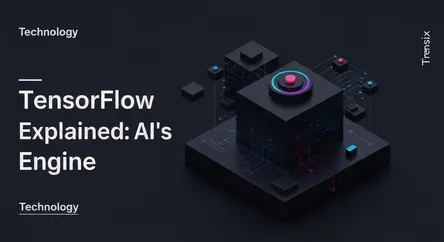Technology
TensorFlow Explained: AI's Engine

Discover TensorFlow, Google's open-source library for machine learning. Learn how it powers deep learning models and shapes AI development.
What is it?
TensorFlow is a free, open-source software library for machine learning and artificial intelligence. Developed by the Google Brain team, it's an end-to-end platform with a comprehensive, flexible ecosystem of tools that allows developers to easily build and deploy ML-powered applications. At its core, TensorFlow uses data flow graphs for numerical computation, where nodes represent mathematical operations and edges represent the multidimensional data arrays, or "tensors," that flow between them. This structure makes it highly efficient for complex deep learning tasks.
Why is it trending?
TensorFlow's popularity stems from its powerful backing by Google, a massive community, and its incredible scalability. It can run on multiple CPUs, GPUs, and even custom hardware like Google's Tensor Processing Units (TPUs), making it suitable for everything from research to large-scale production. Its high-level API, Keras, simplifies model building, making advanced AI more accessible. As industries increasingly adopt AI for data analysis, automation, and prediction, robust and well-supported frameworks like TensorFlow have become indispensable tools for developers and researchers.
How does it affect people?
Many people interact with TensorFlow-powered applications daily, often unknowingly. It is the engine behind features like Google Photos' image recognition, YouTube's recommendation algorithms, and the voice recognition in Google Assistant. Beyond consumer tech, it drives advancements in scientific research, helps doctors analyze medical scans with greater accuracy, and powers the complex systems within self-driving cars. TensorFlow enables the creation of smarter, more personalized, and efficient technologies that are increasingly integrated into the fabric of modern life, from entertainment to healthcare.